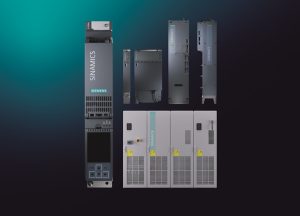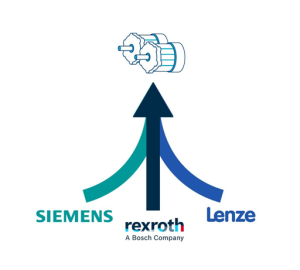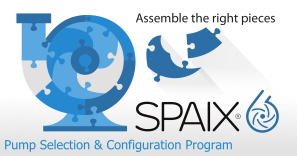World Economic Forum Recognized Siemens’ Fürth Location as Sustainability Lighthouse

The World Economic Forum honors Siemens’ location in Fürth, Germany, for its sustainable manufacturing. (Image source: Siemens AG)
The WEF recognizes organizations, projects and production ecosystems that have achieved step-change impact through technology-enabled reductions in energy, emissions, water and waste in pursuit of net-zero goals, decarbonization and circularity. According to the WEF, the network of Sustainability Lighthouses shows that productivity and sustainability are no longer a contradiction of terms.
“The Sustainability Lighthouse Award recognizes the outstanding work of our team in Fürth. By implementing our intelligent energy system, we reduced energy consumption by 64 percent, and cut greenhouse gas-emissions by 72 percent per throughput, on top we increased production by 145 percent. In this way, we’ve demonstrated that sustainability and productivity can go hand in hand”, said Cedrik Neike, member of the Managing Board of Siemens AG and CEO of Digital Industries. “The innovation does more than just benefit our own operations; we also use it to offer our customers profitable, ecofriendly solutions. This latest award from the WEF Lighthouse Network adds to the recognition already received by our Amberg and Erlangen sites in Germany and our site in Chengdu, China. It also underscores Siemens’ leadership in sustainable manufacturing.”
At the Siemens location in Fürth, which was founded in 1954, the technology company employs around 1,700 people to develop and produce innovative industrial-automation products that help drive digitalization and secure efficiency gains in a variety of industries. For example, the location produces state-of-the-art human machine interface (HMI) panels that serve worldwide as control panels in manufacturing operations in which people work with or on plants and machines. Fürth is home to global production of Siemens’ Simatic HMI panels.
The location aims to achieve net-zero emissions by 2026, which is four years ahead of the overarching target for Siemens as a whole. At the Fürth location, an interdepartmental sustainability team was established back in 2012. This team has systematically introduced measures for reducing energy consumption and CO₂e emissions. In addition to impressive results in both areas, the site reduced its industrial waste by 47 percent per throughput unit between 2019 and 2023.
Energy efficiency in manufacturing and in buildings
At the core of the sustainability measures in Fürth is an innovative, holistic energy system for manufacturing and buildings. Here, several Siemens systems that communicate with one another are being used: Simatic Energy Manager Pro, Siemens Navigator and integrated Performance Services such as the Performance Optimizer. More than 350 power meters on site bring all power data together and enable targeted reductions of energy consumption. They also provide a basis for precise calculation of product carbon footprints (PCFs). The system automatically recommends concrete improvements and has already realized clear potential for savings. For example, annual savings of 952 megawatt hours in lighting systems and of 103 megawatt hours in building automation have been achieved. The amount of electricity saved in this way could power about 2,000 households for a year. The system’s results also flow into the local end-to-end management and monitoring of the PCFs. Data on about 90 percent of the products being manufactured in series is already being captured using Sigreen, which is Siemens’ software for product-level emissions management. Based on the primary data, these products also specify their PCFs.
Improvement of grid quality and circularity
An electromagnetic filtering system launched together with a partner minimizes power losses due to power-grid incidents. During the reviewed period of 2019 to 2023, these improvements led to a 3.8 percent reduction of overall power consumption. It also stabilized power distribution, which in turn reduced the risk of machine downtime.
In addition, the location introduced circularity approaches to reduce industrial waste and lengthen the products’ service lives. In this connection, Fürth benefits from an existing on-site repair center that offers extended Life Repair Service for selected products. There are currently already 310 products for which service lives are being extended in this way. By 2026, this number is to climb to 2,000. “Furthermore, we avoid emissions that would arise during scrapping or during the manufacturing of new products that would otherwise be required,” said plant manager Lorenz Rappl.
Decarbonizing the location
In parallel, additional measures are underway to reduce the location’s energy consumption and to gear it toward self-sufficiency. In the fall of 2023, a 3,300 square meter photovoltaic system with a 460 kilowatt-peak power capacity was installed on the roof of the parking garage. It is one of the largest such installations on an existing Siemens building. Moreover, the plant now produces its own nitrogen to meet the needs of manufacturing applications such as welding. In 2024, the location shifted from receiving nitrogen deliveries to operating a plant for producing nitrogen. In addition, waste heat from industrial processes is to be used to heat the location. These projects not only help reduce emissions, but also enable more efficient use of resources.
Siemens is also making significant progress on its overarching corporate sustainability goals. Through extensive investments, including the use of Siemens’ own technologies to improve the efficiency electrification of production facilities and buildings, Siemens reduced its CO₂e emissions since 2019 by 60 percent. As a leading technology company, Siemens combines the real and the digital worlds and supports its customers with innovative technologies and products to achieve their own sustainability goals – more than 90 percent of Siemens' business enables its customers to achieve a positive sustainability impact.
Source: Siemens Aktiengesellschaft







